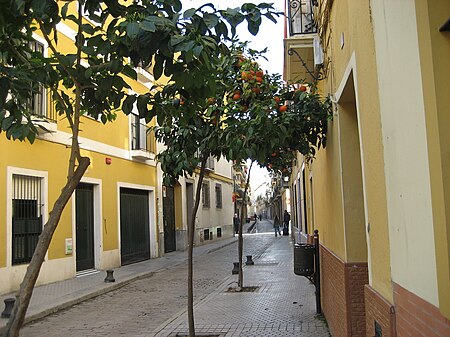Macarena, Seville

Macarena is one of the eleven districts into which the city of Seville, capital of the autonomous community of Andalucía, Spain, is divided for administrative purposes. It is located in the north of the city, bordered to the south by the Casco Antiguo and San Pablo-Santa Justa suburbs, to the east and north by Norte and to the west by Triana. It covers the area between the Guadalquivir River and the Carmona Highway and from the SE-30 ring-road in the north to the Ronda del Casco Antiguo. It contains smaller neighbourhoods such as León XIII, Miraflores, and the Polígono Norte as well as the Miraflores park along the SE-30. The district contains the Andalucian Parliament (former Hospital de las Cinco Llagas), the Torre de los Perdigones in the park of the same name, and the Hospital Universitario Virgen Macarena
Excerpt from the Wikipedia article Macarena, Seville (License: CC BY-SA 3.0, Authors, Images).Macarena, Seville
Calle Monederos, Seville Distrito Macarena
Geographical coordinates (GPS) Address Nearby Places Show on map
Geographical coordinates (GPS)
| Latitude | Longitude |
|---|---|
| N 37.404166666667 ° | E -5.9902777777778 ° |
Address
Calle Monederos
Calle Monederos
41071 Seville, Distrito Macarena
Andalusia, Spain
Open on Google Maps











